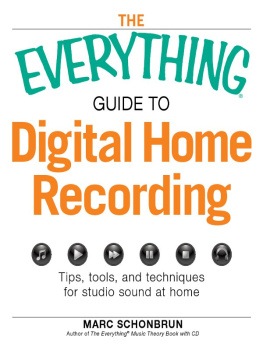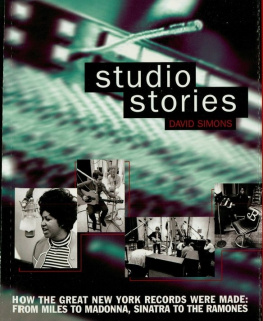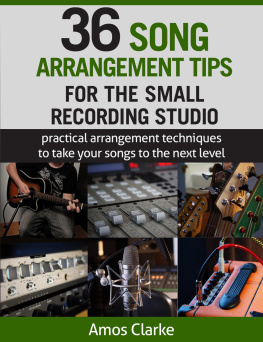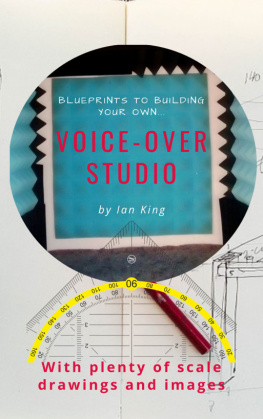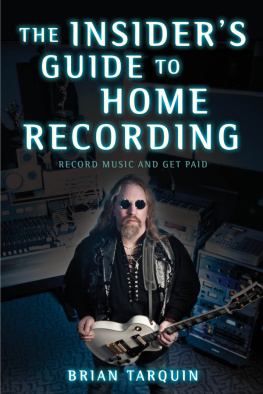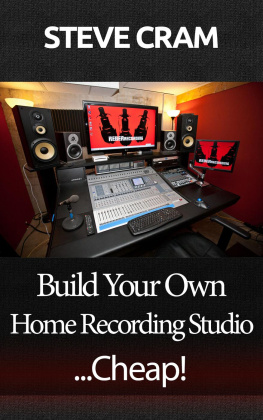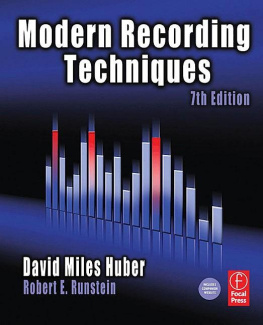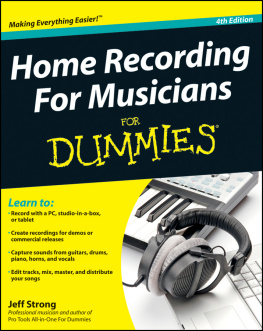About the Authors
Mike Shea has more than 40 years experience as an independent contractor specializing in the construction of rehearsal and recording studios. He has taught graduate courses at the Institute of Audio Research, served as editor of Recording World and technical editor of International Musician, and has written extensively about all aspects of professional audio. Mr. Shea resides in New York.
F. Alton Everest was a leading acoustics consultant. He was cofounder and director of the Science Film Production division of the Moody Institute of Science, and was also section chief of the Subsea Sound Research section of the University of California.

Copyright 2010 by The McGraw-Hill Companies, Inc. All rights reserved. Except as permitted under the United States Copyright Act of 1976, no part of this publication may be reproduced or distributed in any form or by any means, or stored in a database or retrieval system, without the prior written permission of the publisher.
ISBN: 978-0-07-178272-2
MHID: 0-07-178272-9
The material in this eBook also appears in the print version of this title: ISBN: 978-0-07-178271-5, MHID: 0-07-178271-0.
All trademarks are trademarks of their respective owners. Rather than put a trademark symbol after every occurrence of a trademarked name, we use names in an editorial fashion only, and to the benefit of the trademark owner, with no intention of infringement of the trademark. Where such designations appear in this book, they have been printed with initial caps.
McGraw-Hill eBooks are available at special quantity discounts to use as premiums and sales promotions, or for use in corporate training programs. To contact a representative please e-mail us at bulksales@mcgraw-hill.com.
Information contained in this work has been obtained by The McGraw-Hill Companies, Inc. (McGraw-Hill) from sources believed to be reliable. However, neither McGraw-Hill nor its authors guarantee the accuracy or completeness of any information published herein, and neither McGraw-Hill nor its authors shall be responsible for any errors, omissions, or damages arising out of use of this information. This work is published with the understanding that McGraw-Hill and its authors are supplying information but are not attempting to render engineering or other professional services. If such services are required, the assistance of an appropriate professional should be sought.
TERMS OF USE
This is a copyrighted work and The McGraw-Hill Companies, Inc. (McGraw-Hill) and its licensors reserve all rights in and to the work. Use of this work is subject to these terms. Except as permitted under the Copyright Act of 1976 and the right to store and retrieve one copy of the work, you may not decompile, disassemble, reverse engineer, reproduce, modify, create derivative works based upon, transmit, distribute, disseminate, sell, publish or sublicense the work or any part of it without McGraw-Hills prior consent. You may use the work for your own noncommercial and personal use; any other use of the work is strictly prohibited. Your right to use the work may be terminated if you fail to comply with these terms.
THE WORK IS PROVIDED AS IS. McGRAW-HILL AND ITS LICENSORS MAKE NO GUARANTEES OR WARRANTIES AS TO THE ACCURACY, ADEQUACY OR COMPLETENESS OF OR RESULTS TO BE OBTAINED FROM USING THE WORK, INCLUDING ANY INFORMATION THAT CAN BE ACCESSED THROUGH THE WORK VIA HYPERLINK OR OTHERWISE, AND EXPRESSLY DISCLAIM ANY WARRANTY, EXPRESS OR IMPLIED, INCLUDING BUT NOT LIMITED TO IMPLIED WARRANTIES OF MERCHANTABILITY OR FITNESS FOR A PARTICULAR PURPOSE. McGraw-Hill and its licensors do not warrant or guarantee that the functions contained in the work will meet your requirements or that its operation will be uninterrupted or error free. Neither McGraw-Hill nor its licensors shall be liable to you or anyone else for any inaccuracy, error or omission, regardless of cause, in the work or for any damages resulting therefrom. McGraw-Hill has no responsibility for the content of any information accessed through the work. Under no circumstances shall McGraw-Hill and/or its licensors be liable for any indirect, incidental, special, punitive, consequential or similar damages that result from the use of or inability to use the work, even if any of them has been advised of the possibility of such damages. This limitation of liability shall apply to any claim or cause whatsoever whether such claim or cause arises in contract, tort or otherwise.
Contents
Preface
I began my career as a recording studio engineer in the 1960s, at a time when one was not only designated as the audio mixer but also the studio designer/builder along with part of the crew that built the studios console. By 1970, I was attending lectures at MIT by Leo L. Beranek, a partner with R. H. Bolt of Bolt, Beranek and Newman, and a leading auditorium acoustician. Attending college close to full time, attending seminars and lectures, and working in a recording studio while running my own four-track portable recording business, youd think that all kinds of needed information would be pouring in my direction. While all of the above gave me a great deal of insight into the field of acoustics, it seemed there wasnt anybody talking about the things that were most directly important to pop music recording. I, like many others at this point in time, was among the first to deal acoustically with a whole new situation. Take two electric guitarists, each running through mega-power stacks comprised of Hi-Watt amps on top of dual 4 12 inch speaker cabinets, a bass player using dual Ampeg folded horn cabinets with 18-inch speakers driven by a 250-watt Plush amp, a drummer with a giant drum kit played with sticks held backwards so as to have the thick end out, and a keyboardist using a Hammond organ attached to two Leslie speakers (with variable motor speed drives) and a synthesizer capable of producing sub-audible tones plugged directly into the console. Place all of this in a 20 25 foot room, hit record, and youll have an idea of what Im referring to.
Then along came F. Alton Everests groundbreaking book in the field of recording studio acoustics and his generosity in not only making available these findings, but also doing so in an accurate yet easily understood manner. Youd never understand what a big deal this was unless youve tried to explain to a professional acoustician/noise control engineer that it would not be possible to simply decrease the electric guitarists amplifier level or remove one of two 4 12 speaker cabinets that made up his stack, and yes, the electric bass guitarist did feel it was appropriate to thump his fingers against the instruments strings, thereby causing those low frequency shock waves of vibration. My introduction to the first edition of Mr. Everests book did not adequately put forth the feeling of gratitude that I hold for him. To further illustrate this point, I will explain what it was like back in 1971 when I was a student of the science of acoustics. At that time, one of the better publications in the field was the Soviet acoustician V. S. Mankovskys Acoustics of Studios and Auditoria.
The drill with this book was to read a short amount of text, then labor through a given mathematical equation. Read another line or two of text that varied the acoustical situation slightly, then work your way through the resulting more complex equation. The section covering Helmholtz resonators is only 15 pages long, however, it contains no fewer than 37 mathematical equations!


